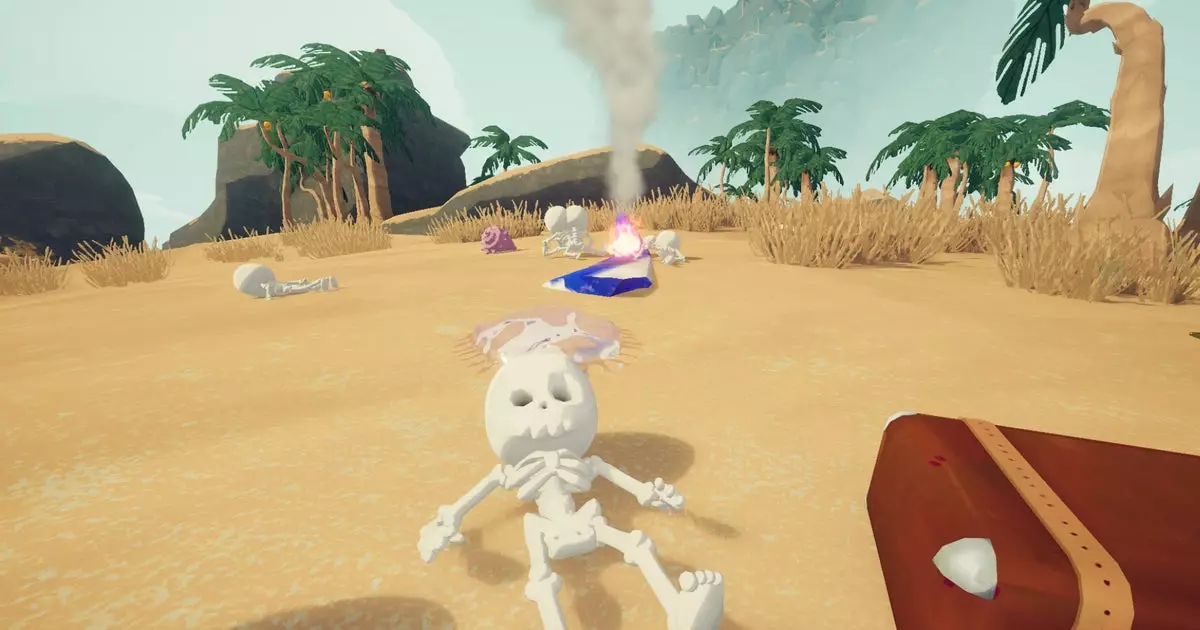Modern gaming continually pushes the envelope, not just in terms of graphics and gameplay mechanics but in how players engage with virtual worlds. The recent introduction of the Everest mod for Peak exemplifies this trend. By transforming a climbing simulation into a macabre tableau of skeletons scattered across treacherous peaks, developers and modders are challenging traditional notions of what is acceptable in gaming environments. Instead of purely awe-inspiring vistas or the thrill of conquest, players are immersed in a morbid landscape reminiscent of dark fantasy realms or post-apocalyptic wastelands. This radical alteration prompts a reevaluation of the boundaries between challenge and spectacle, between immersion and spectacle, and whether gaming should serve solely as escapism or also as a canvas for provocative experimentation.
Subversion of the Solo Experience: Connected Through Death
One of the most compelling aspects of the Everest mod is its capacity to forge a collective experience rooted in the shared risk of virtual death. By populating the landscape with skeletons of fellow adventurers, it amplifies the social dimension of an otherwise solitary activity. Each skeleton acts as a silent testament to someone else’s failed attempt, transforming the terrain into a tapestry of collective struggle and perseverance. These bones serve both as warnings—marking danger zones—and as a morbidly humorous reminder of mortality in a game that, at its core, is about surpassing physical limits. Interestingly, this creates an eerie form of community; players are implicitly linked through their failures, their skeletons telling stories of daring and fallibility. This mechanism elevates Peak from a mere climbing simulator to a shared monument to resilience and vulnerability in the face of natural and virtual dangers.
Reframing Morbidity as Artistic Expression and Social Commentary
Typically, death in video games is internalized—players respawn and continue their journey. However, the Everest mod externalizes this process, turning death into a visible and tangible element of the environment. This shift positions players as both explorers and witnesses to the outcomes of their and others’ actions. It beckons a form of social commentary on the nature of risk, mortality, and the often-blurred line between challenge and danger. Some might argue that this elevates the game into the realm of dark satire, where the spectacle of skeletons prompts reflection on the fragility of human endeavor and the transient nature of success. Moreover, the mod’s capacity to generate thousands of skeletons from over 3,000 players raises questions about the collective consciousness in gaming—how our failures and deaths are documented, shared, and remembered within digital landscapes.
Balancing Innovation with Ethical and Artistic Responsibility
While the Everest mod demonstrates impressive creativity, it also raises ethical considerations about the portrayal of death and morbidity. Turning a fun co-op climbing game into a morbid landscape littered with skeletons might entertain some, but could be disturbing for others. Developers and modders must grapple with the potential impact of such modifications on different audiences, especially considering the lighthearted intent behind many games. However, the mod’s meticulous design—including customizable settings and notification systems—indicates an intention to empower players to tailor their experience. This level of control suggests an acknowledgment of the sensitive nature of incorporating death as a visual motif, balancing artistic boldness with respect for varied player sensitivities. It exemplifies how innovation in gaming involves not just creative leaps but also an awareness of the boundaries that should not be crossed, even in the pursuit of novel experiences.
The Future of Interactive Morbidity: A New Frontier?
The Everest mod exemplifies how community-driven innovation can radically reshape gaming narratives and aesthetics. By integrating thousands of skeletons into Peak’s vibrant world, the mod hints at a future where virtual spaces evolve beyond their original design, becoming dynamic reflections of collective histories—both triumphant and tragic. It exemplifies a provocative approach: turning games into repositories of shared memory, where each fallen avatar signifies a story, a lesson, or a warning. Such developments could influence future game design philosophies, encouraging creators to experiment with integrating social and emotional layers into gameplay. In a broader context, this might herald a shift towards more nuanced, complex representations of mortality in interactive entertainment—challenging the sanitized, purely escapist tradition and instead embracing the raw, often uncomfortable realities of human experience.

